I tested the pricey Dyson WashG1, the brand's first vacuum-mop, and it struggles to compete with cheaper market leaders
Is the Dyson WashG1 worth the spend to deep clean your home's hard floors?
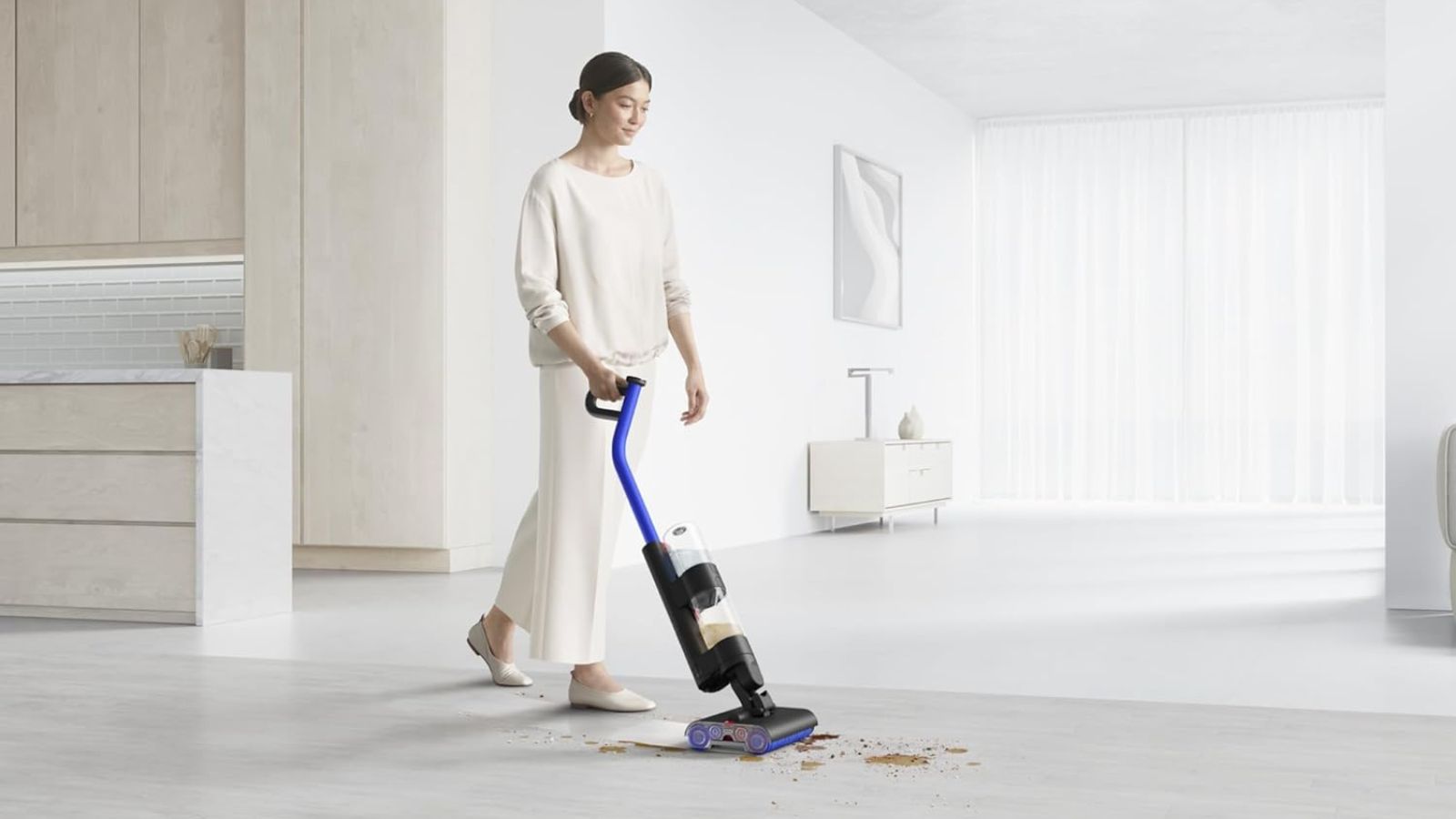
The Dyson WashG1 is a great first entry into the world of vacuum-mop hard floor cleaners, but other brands are still leading the way with smarter features and more comprehensive cleaning. It does a decent job of cleaning the floors, but during testing it struggled (in a messy way) to clean everything. For the price, I'd recommend going for any of my suggested alternatives.
-
+
Lightweight
-
+
Great edge cleaning
-
+
Easy to empty, refill and wash water tanks
-
+
Can lay almost flat
-
-
Can't clean everything
-
-
Messy to empty the debris tray
-
-
No floor detection
-
-
Minimal customization
-
-
Expensive compared to competitors with better features
You can trust Homes & Gardens.
The WashG1 is Dyson's first-ever dedicated hard floor cleaner. It says goodbye to Dyson's famous cyclone suction that makes their vacuums so powerful, and instead uses two rollers that pick up liquids and solids while mopping your floors in the process.
But how well does it clean? I'm Homes & Gardens' home tech editor, and my testing team and I have reviewed 65 of the world's best vacuums. From the 100+ hours I've personally spent testing, I know what good-quality floorcare looks like.
I put the Dyson WashG1 to the test in my home home and in our dedicated test center across a variety of common household substances, to find out what it can do and whether it's worth your money.
Dyson WashG1: Specifications
Type | Cordless wet floor cleaner |
Run time | 35 minutes |
Cleaning coverage | 3,000 square feet |
Charge time | Up to 2 hours |
Cleaning modes | 3 |
Clean water tank | 0.26 gallon |
Dirty water tank | 0.21 gallon |
Self-cleaning? | Yes |
Self-drying? | No |
Weight | 10.8 pounds |
Dyson WashG1: Unboxing and setup
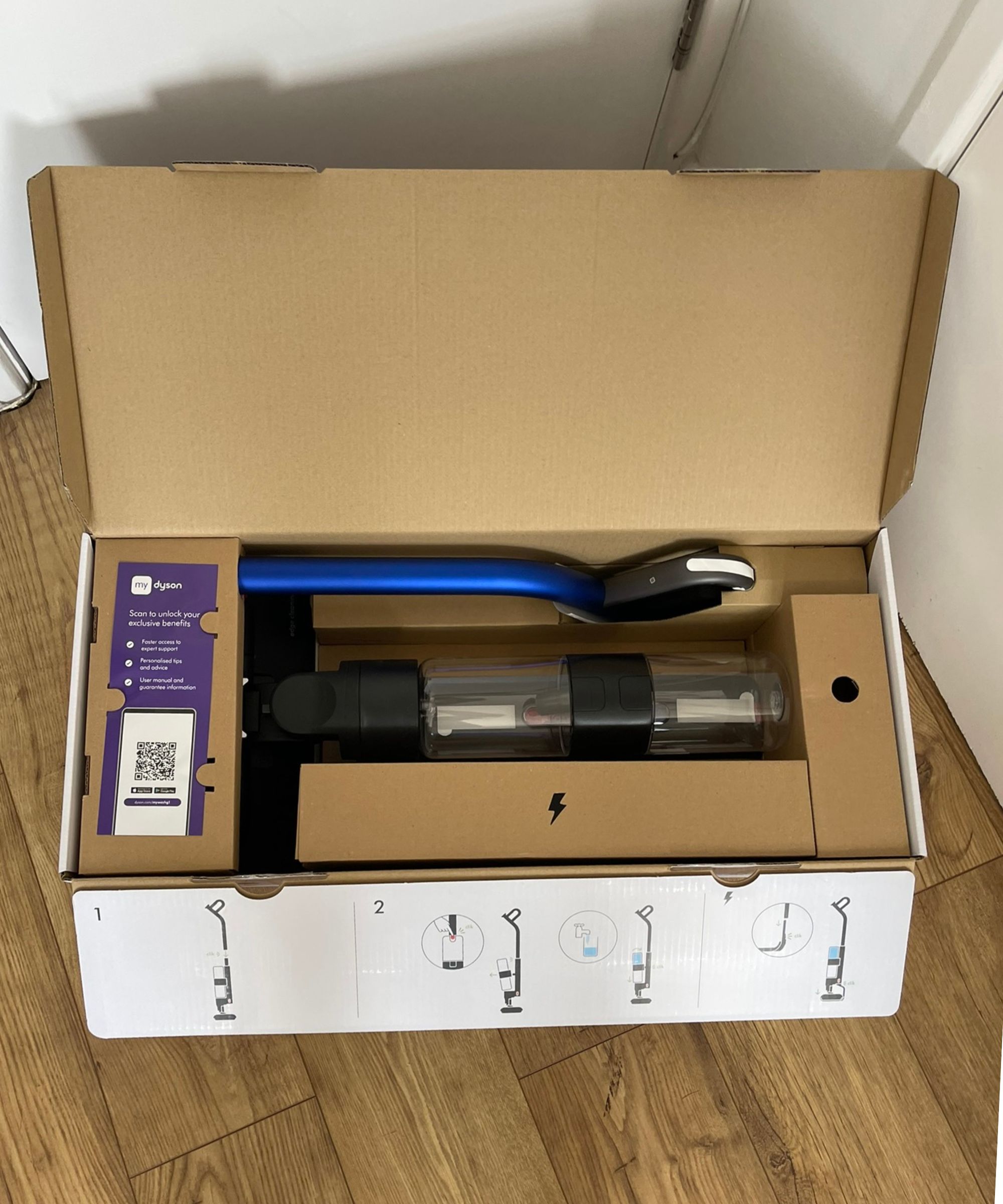
The Dyson WashG1 contains no unnecessary plastic packaging
As always from Dyson, the box was completely free of any soft plastic packaging and everything was packed using recyclable cardboard. The only setup required is to attach the handle to the main unit, dock it on the charging base then wait for it to charge (which took around two hours for me). There are some protective stickers to peel and then you're ready to start cleaning your hard floors.
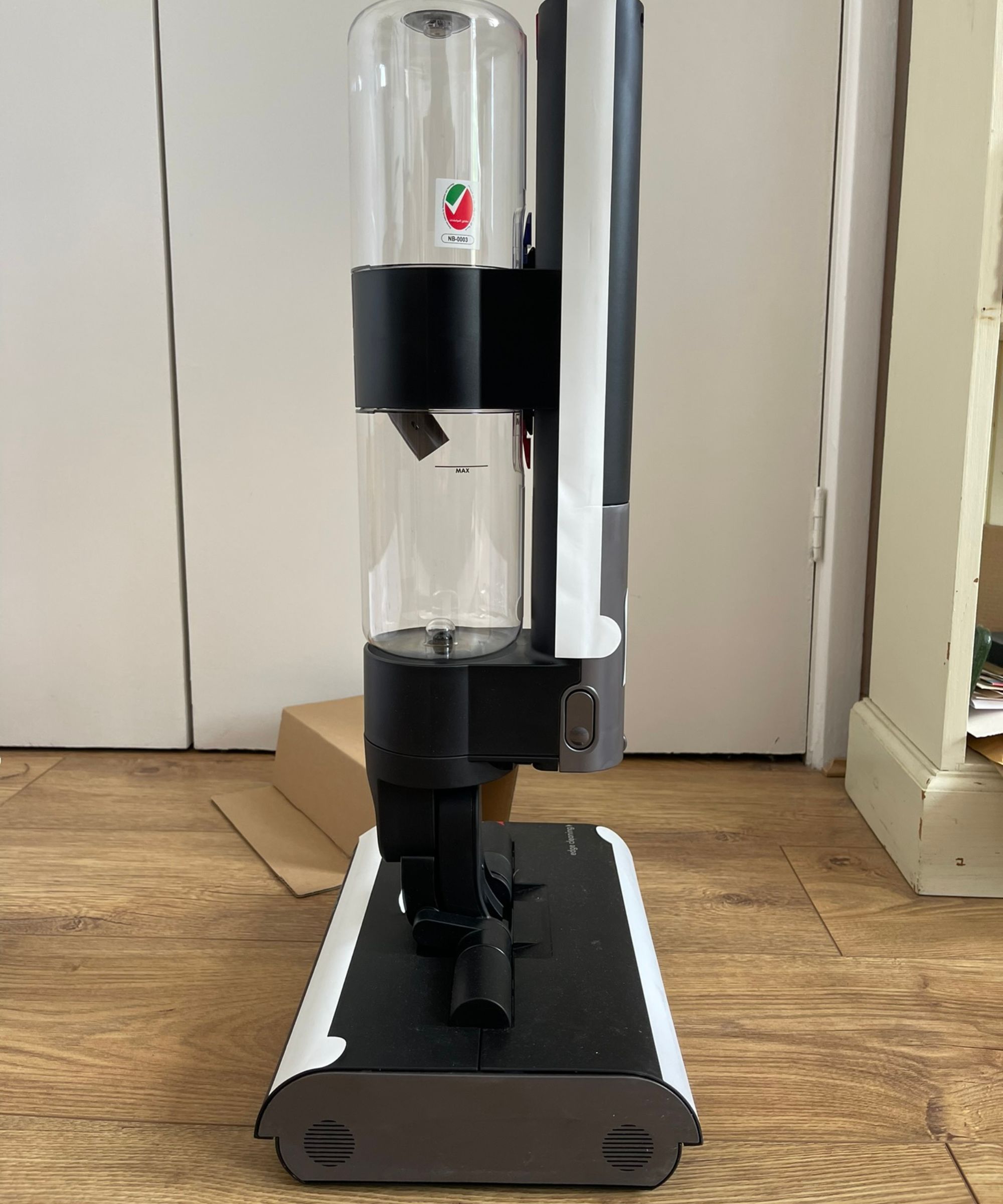
It takes around two hours to fully charge
Dyson WashG1: Design and features
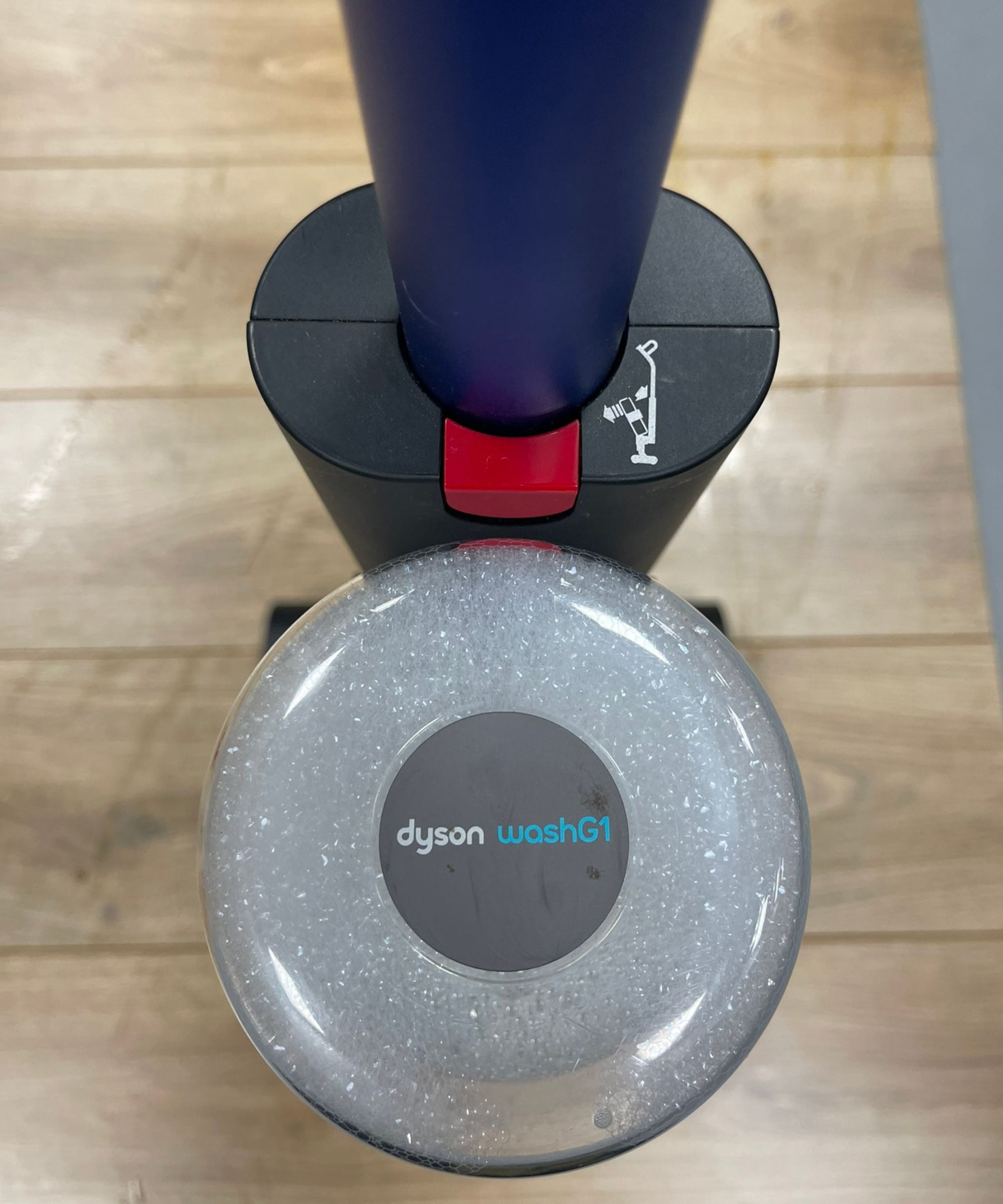
The 0.26 gallon water tank can be filled with just fresh water
I visited the Dyson labs in Malmesbury, UK when the Dyson WashG1 was first announced and got the full lowdown of how the floor cleaner works. It's completely cordless with up to 35 minutes of runtime on a single charge, designed to both vacuum and mop your hard floors of spills, stains and solid messes.
To keep the WashG1 as lightweight as possible, Dyson removed the suction motor that the best Dyson vacuums rely on for their strong airflow. Instead, two opposing rollers pick up liquids and solids, separating them into a debris tray or the dirty water tank.
Unlike other hard floor cleaners, the WashG1 doesn't use a cleaning solution. The rollers have their dirty moisture extracted while 26 hydration points evenly pump fresh water onto them to make sure that it's only mopping the floors with clean water.
You can choose between three moisture levels, with the lowest providing a lesser clean but faster drying, and the highest providing deep cleaning and slower drying. After each use, the charging base will self-clean the WashG1's rollers with as much clean water as you fill into the tank. It takes a rapid 140 seconds to do this, but unfortunately does not have a self-drying function to prevent the growth of mold and mildew from the moist bacteria like some of the best robot vacuum and mops.
Dyson WashG1: Cleaning tests
I tested the Dyson WashG1 in our dedicated test center using five standardized substances of varying consistencies and properties:
- 1 tablespoon of ketchup
- 1 tablespoon of mustard
- 2 tablespoons of chunky tomato and vegetable pasta sauce
- 1 egg, dropped from five feet up
- 1 cup of milk and cereal
Ketchup and mustard are generally the easiest tests for a vacuum-mop. The Dyson WashG1 cleared the ketchup after two passes, leaving little residue behind. But the mustard was spread from under the rollers across the floor, and I could see oil in the liquid resting on the surface. It took a few more passes to completely clean the wood floor, which isn't great performance for a test that other vacuum-mops tend to ace first time.
The WashG1 redeemed itself cleaning the pasta sauce after a forward and backward pass, then showed its limitations when attempting to clean the broken egg.
Egg is a tricky substance for a vacuum-mop as it has large pieces and a thick, greasy consistency. The WashG1 was unable to clean the floor without streaks. The egg almost emulsified as I went over it and it became too thick for the rollers to pick it up, which then became clogged and unable to vacuum any more.
When I lifted the machine, a lot of liquid poured out and splashed across the floor. No matter how many times I tried to then vacuum it up, it kept getting clogged in the intake and then pouring it when I moved the machine.
I think this is a major drawback of the dual-brushroll design, as it seemed like the vacuum had completely lost its suction power. After emptying the debris tray and dirty water tank, I tried again and it made a high-pitched whirring sound as it attempted to vacuum the egg, showing that it picked up a tiny bit more than previously, but still couldn't get the majority of it.
I ended up using the Tineco Floor One S7 Pro which cleaned the mess instantly without leaving any residue behind and drying within five minutes. I didn't encounter this issue with any other substance or during the weeks of using it in my home, so it's possible that eggs and egg-adjacent messes are the only culprit here, but still, when upgrading to a wet vacuum you don't want to be left with common household messes that it can't handle.
Then surprisingly, it performed amazingly when cleaning milk and cereal, crushing down the pieces with the two rollers and leaving no mess behind after two passes. The floor was non-sticky and dry around eight minutes later.
What is the Dyson WashG1 like to use?
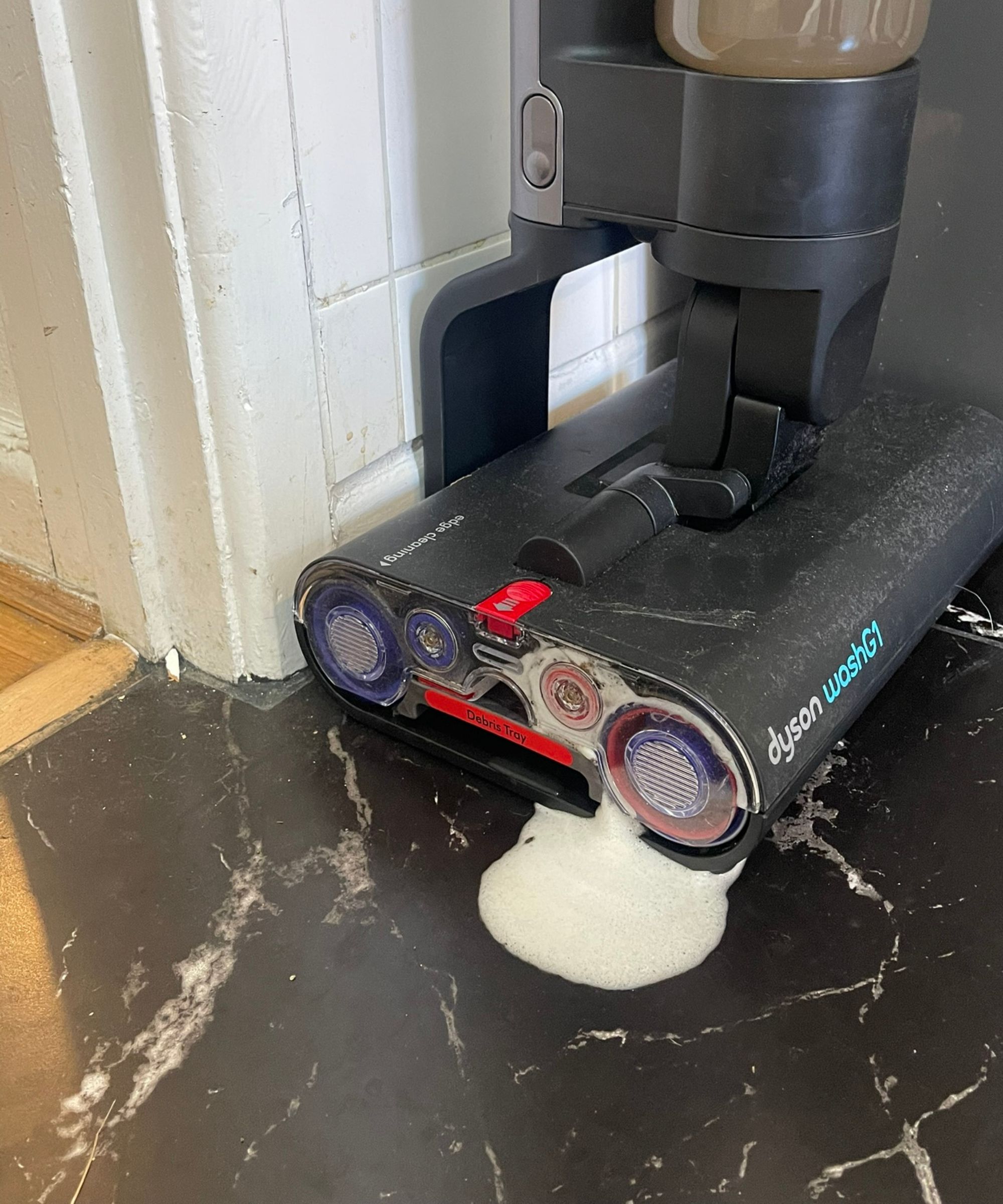
If using dish soap in the clean water tank, foam can come out of the brushroll during the cleaning cycle
I've been using the Dyson WashG1 in my own hard floor-filled home as well as in our test center. Mostly, I've had a great experience with it. It cleans the floors quickly, glides along effortlessly, has impressive cleaning up to the baseboards, a quick self-cleaning cycle, and water tanks that are easy to fill, empty and wash.
My main peeve is the lack of cleaning solution. Dyson states that the WashG1 is engineered to clean hard floors with just clean water, but you can use gentle detergents if you want to. Water doesn't have the anti-bacterial properties that cleaning solutions do so I used mild dish soap to properly sanitize my floors.
It works great on the floors, but unfortunately foams heavily inside the machine. When self-cleaning, I found that foam was pouring out of the side of the rollers which needed wiping up, but since then I've used less (one drop per full water tank) and I haven't had the problem since. You can also avoid this issue by using a non-foaming cleaning solution, like any of the hard floor solutions available from Bissell or Tineco.
The WashG1 is super easy to maneuver. It easily gets under furniture with its almost 180-degree lay, and you can tilt it from side to side pretty effortlessly. I've found it's great at getting into tight spaces too as I'm frequently cleaning around my dinner table and chairs.
A major drawback however is how messy it is to clean. It sounds great that debris is separated into its own tray, but what this does is create a sloppy mess that is impossible to not get all over your hands when emptying. It also means you're splashing dirty liquid while trying to empty it all into the trashcan.
How does the Dyson WashG1 compare?
The Dyson WashG1 is priced at $699.99 at Dyson, and as it's a new release I'm yet to see it discounted. I tested it alongside the Tineco Floor One S7 Pro, the Tineco Floor One Stretch S6 and the Dreame H14 Pro, and the Dyson is more expensive than all of them except for the S7 Pro.
For this price, I'm surprised to see it lacking features that are commonly found in others. The Dreame H14 Pro and the Tineco models all have more advanced features, like detecting how messy the floor is and adjusting the cleaning power accordingly. They also have more customization when choosing cleaning mode.
The Tineco Floor One S7 Pro is the best cleaner out of the lot and it costs just $50 more at full price, and is often discounted to around $600 to $650, making it the cheaper and better option than the Dyson.
All of these models have self-drying as well as self-cleaning, which is a much more thorough approach to removing bacteria and preventing the growth of foul smells and bacteria. Even the Tineco Floor One S6 Stretch, which costs $599 (and often reduced to $499), can do everything the Dyson can but with improved cleaning performance.
Should you buy the Dyson WashG1?
The Dyson WashG1 is a good cleaner that's easy to use, and it's genuinely done an amazing job of transforming how clean my home is. But for the price, I would actually recommend one of the alternative models above. Other, more advanced floor cleaners are available for either the same price or less, and they can clean more effectively, leave your floors drier, dry the rollers to prevent smells and have smarter features for more intuitive cleaning.
That being said, the WashG1 is one of the most lightweight vacuums in this market, and it's incredibly easy to get right. If you're a Dyson fan, it's not a bad purchase, I just think the competitors take the lead here.
How I tested the Dyson WashG1
I tested the Dyson WashG1 for four weeks in my own home before putting it through standardized tests of five different substances (outlined above). The substances vary across texture, consistency and thickness to find out completely what the cleaner is capable of.
I tested all the cleaning modes available, how easy and mess-free it is to clean, and how well it works compared to other models.
Next, find out how to clean floors efficiently with a steam mop, or compare mopping vs wet vacuuming to find out what's right for you.
Sign up to the Homes & Gardens newsletter
Design expertise in your inbox – from inspiring decorating ideas and beautiful celebrity homes to practical gardening advice and shopping round-ups.

Dan is the Home Tech Editor for Homes & Gardens, covering all things cleaning, smart home, sound and air treatment across the Solved section. Having worked for Future PLC since July 2023, Dan was previously the Features Editor for Top Ten Reviews and looked after the wide variety of home and outdoor content across the site, but their writing about homes, gardens, tech and products started back in 2021 on brands like BBC Science Focus, YourHomeStyle and Gardens Illustrated.
They have spent more than 200 hours testing and reviewing vacuums for Homes & Gardens, and have even visited Dyson's engineering labs for the full low-down of the ins and outs of our trusty cleaners.
Dan has a BA in Philosophy and an MA in Magazine Journalism. Outside of work, you'll find them at gigs and art galleries, cycling somewhere scenic, or cooking up something good in the kitchen.
You must confirm your public display name before commenting
Please logout and then login again, you will then be prompted to enter your display name.
-
 Jennifer Aniston’s bedroom is a ‘goldmine of simple sumptuousness’ – it’s 2025’s version of quiet luxury and so easy to recreate
Jennifer Aniston’s bedroom is a ‘goldmine of simple sumptuousness’ – it’s 2025’s version of quiet luxury and so easy to recreateThe actress's unique space features James Mont-designed lamps and a raised bed inside a walnut plinth – but you can recreate its understated sophistication
By Megan Slack Published
-
 Zooey Deschanel and Jonathan Scott's breakfast nook is an innovative, effective use of kitchen space – it turns a 'dead area' into a cafe-style corner
Zooey Deschanel and Jonathan Scott's breakfast nook is an innovative, effective use of kitchen space – it turns a 'dead area' into a cafe-style cornerJonathan and Zooey have situated an eccentric yet elegant dining area in what may have been an otherwise underused corner
By Hannah Ziegler Published
-
 Kelly Ripa and Mark Consuelos's dining room shelves combine unexpected elements for the ultimate storage solution – it's multi-functional and replicable
Kelly Ripa and Mark Consuelos's dining room shelves combine unexpected elements for the ultimate storage solution – it's multi-functional and replicableGreen shelves in Kelly Ripa and Mark Consuelos' dining room cleverly combine storage to accomplish separate purposes in a pretty way
By Sophie Edwards Published